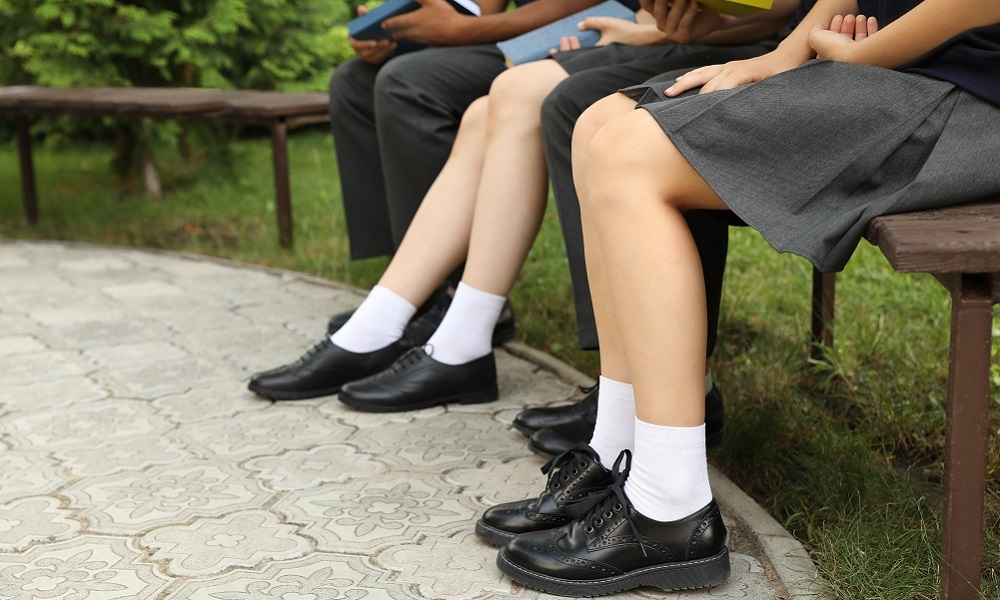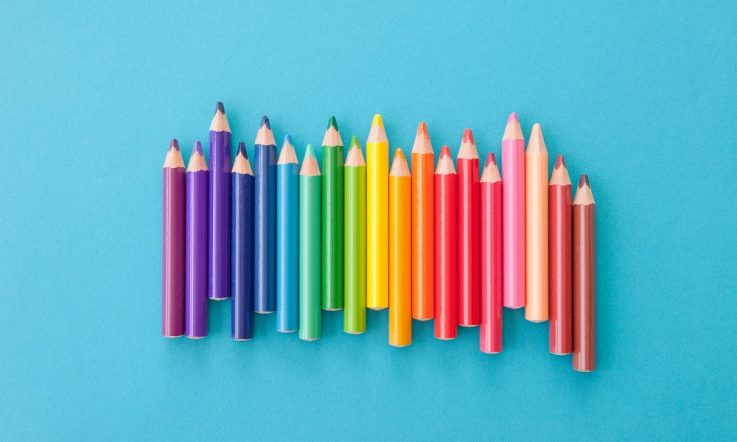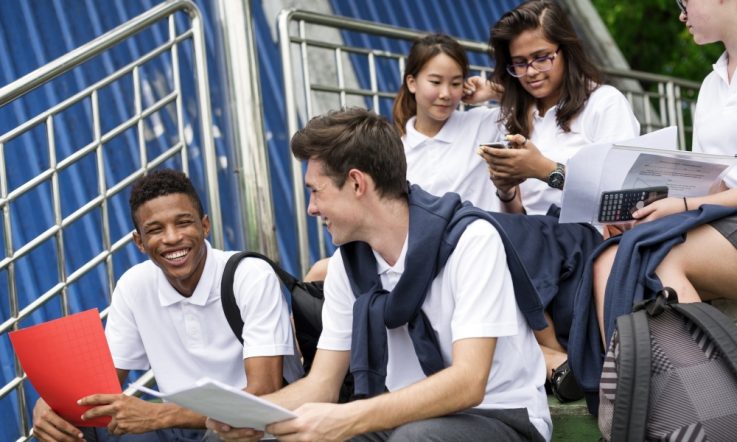Is school a safe place for gender and sexuality diverse students to be themselves?
In today’s Q&A, Associate Professor Jacqueline Ullman from Western Sydney University shares findings from her report Free2Be…Yet?, a follow-up to 2015’s Free2Be?. It details the findings from a second nationwide survey of gender and sexuality diverse Australian secondary school students.
To begin, could you tell readers how you came to be involved in this study?
I did an interdisciplinary PhD at the University of Sydney, working across educational psychology and sociology and developing my research skills. My PhD research was the first of my national studies of gender and sexuality diverse students (often referred to as LGBTQI+). I have since followed this work with the Free2Be? Report (2015), detailing the experiences of over 700 high school students, and released Free2Be…Yet? earlier this year (2021), this time with nearly 2400 high school participants.
I came to this work after noticing social marginalisation of students whose behaviours or appearances somehow ‘marked’ them as same-sex attracted or gender diverse – even if they didn’t identify as such or disclose this to their peers. The social policing happening within youth peer cultures was both fascinating and deeply troubling and I reflected that, within my pre-service and in-service teacher training, these topics were not mentioned.
My training had not prepared me with the resources, language (or confidence, for that matter!) to address gender-based, homophobic and transphobic student harassment or exclusion. It was clear to me that the way that schooling systems address (or fail to address) gender and sexuality diversity, and related bias-based harassment, is an element of ‘school climate’ – with obvious impact on the school-based wellbeing of gender and sexuality diverse students and teachers.
The central research question in this study was: ‘Is your school a place where it is safe for you to be yourself? Are you free to be you?’ So, are schools a safe place for students to be themselves?
Trend data would say, no, they are not. Compared to baseline averages for mainstream high school students, participating gender and sexuality diverse high school students were less likely to express confidence that their teachers were capable of managing bullying at school.
Further, using the Programme for International Student Assessment (PISA) measures of belonging and isolation for 15-year olds, 15-year-old gender and sexuality diverse participants fared substantially worse compared to Australian student averages, with scores lower than even the lowest ranked countries globally. Less than half felt that they ‘belonged at school’ (44 per cent compared to 72 per cent of Australian mainstream students) – a finding which should be distressing to any educator.
There is obviously a great deal of individual variation and there are many schools doing wonderful work in this area, as indicated by a portion of the students who participated. However, by and large, on average, this project paints a picture of the typical high school as being one where homo/transphobic language is rife, where teachers do not respond to this with consistency, where the official health/sexuality curriculum is silent on topics related to gender and sexuality diversity, and where students lack awareness of whether or not policies are in place to protect them from discrimination at school based on these elements of their identity.
Free2Be…Yet? sought to explore the experiences and relationships of Australian high school students five years after the initial survey. Has anything changed since the survey was first conducted?
Compared to the earlier iteration of this research, greater percentages of students across each schooling sector reported that, on at least one occasion, they had spoken about LGBTQI+ people, history or related current events in class. Assuming these conversations were positively-oriented, this points to somewhat greater visibility. Likewise, students were about twice as likely as in the previous iteration to indicate that they were aware of their schools’ inclusive harassment policies, with same-sex attracted students as a named protected group.
These findings are acutely meaningful, as positive visibility and affirmation from school-based adults is a critical element of a positive school climate for gender and sexuality diverse young people. As evidenced, students who were aware of their schools’ inclusive harassment policies had significantly higher reported school-based wellbeing, including confidence in their capacity to learn.
Sadly, young people’s reports of verbal and physical harassment of gender and sexuality diverse students remained on par with findings from 2015. And while increased numbers of students indicated that their school’s harassment policies named gender expression/gender diversity as a protected characteristic, the overall numbers of students reporting this remained abysmally low (10 per cent), in keeping with the overwhelming majority of students who indicated that their teachers did not speak about diversity of gender expression.
You found that 93 per cent of students had heard homophobic language at school, with 37 per cent of these young people reporting hearing this language daily. Could you share some of the experiences of the students from the focus groups and interviews? How did hearing these comments make them feel?
Firstly, I’d like to note that, the reported frequency with which students reported hearing homophobic and transphobic language at school was significantly correlated with their reported school-based wellbeing. Trend data shows that, where students heard this language at school more often, their wellbeing suffered. Among the worst impacted areas of wellbeing was students’ reported sense of connectedness to the school environment.
Most participants provided qualitative (open-ended) responses, telling stories of their teachers’ reactions to verbal/physical bias-biased harassment and violence towards themselves or their peers who identified as, or were assumed to be, gender and sexuality diverse. The majority of these responses described teachers’ tactical ignoring of homo/transphobic comments or low-level physical harassment. It is important to take this on board as an indication of how these students feel about their teachers’ investment in their protection.
Many made assumptions that either their teachers didn’t care about gender or sexuality diverse students or didn’t want to get ‘caught up’ in conversations about gender and sexuality diversity – either because they felt awkward or because they were concerned that perhaps students might question the intervening teachers’ sexuality. As one student put it:
‘My teacher looked mad at [the student using the homophobic language] but didn’t say anything. I think she was scared he would do the same to her.’
A number of students said that they felt their teachers blamed them for the disruption to class, for drawing attention to themselves (as being gender/sexuality diverse) or for defending themselves or gender and sexuality diverse individuals more broadly. In the worst stories (roughly 10 per cent of responses), students felt as if their teachers were actively participating in the harassment of gender and sexuality diverse students for a laugh from the class, or because of their underlying homo/transphobic attitudes. These students did not feel supported or protected by their teachers and, in the worst cases, they felt actively disliked and targeted for their diverse identities.
The study also found that of those who reported classmates using homophobic language within earshot of school staff, merely 6 per cent reported that these adults always intervened to put a stop to its use. While transphobic language was reported with less frequency overall, nearly 57 per cent of students reported that their teachers never, or hardly ever, positively intervened when it was used. Was this surprising to you?
Truthfully, no. Given the amount of negative media attention that educators and schools have received for acknowledging the existence of gender and sexuality diversity, coupled with the removal of related curriculum content in certain states/territories, it comes as no surprise that teachers are described by students as unwilling to engage with the homo/transphobic underpinnings of bias-based language.
Research with teachers has shown that many fear negative repercussions should they engage with these topics and students in this research describe situations in which their teachers attempt to ‘shut down’ these conversations as quickly as possible. As told by the young people, this came across through perceptions that their teachers purposively ignored homo/transphobic language or would seek to stop students’ use of this language in the most basic of ways (i.e. sternly saying ‘Stop!’ or ‘Language!’, without further engagement).
As you pointed out, only a very small number of participants across the entire cohort (6 per cent of all open-ended responses detailing stories of verbal harassment), told stories where their teachers actively acknowledged the discriminatory nature of the language used. These students felt seen and cared for. As one student wrote of their teachers’ responses to transphobic behaviours in the classroom:
‘The teachers are so supportive of me and other transgender students so they always try to explain how hurtful the things they’re doing/saying is and want them to stop behaving that way.’
At the most basic level, this type of intervention hinges on teachers’ confidence that they are allowed to not only mention gender and sexuality diversity, but support, affirm and defend it. Assuming participating students’ accounts present an accurate picture of the typical Australian classroom, we can take from this work that limited numbers of teachers have this confidence.
Throughout the report, you’ve included personal anecdotes and quotes from the students. They were quite harrowing and heart-wrenching at times, but also really powerful. Why was it important to use the students’ own words throughout this report?
Statistical data can never have the same impact as hearing the words of these incredible, generous kids. They have taken the time to share their voices and their experiences and you can hear the emotion in their words: their anger and sense of betrayal as they describe unsafe schooling environments; and their gratitude and respect for the educators who work to counter bias-based harassment and affirm their identities. I don’t know many adults – particularly educators, driven to the profession by their desire to help children reach their full potential – who could turn a blind eye to these stories.
And finally, the report sets out really clear recommendations for teachers and school leadership personnel. Could you share some of the ways teachers can better support students, and also at the same time, improve their own personal understandings of the issues facing gender and sexuality diverse students at their schools?
Despite whatever state/territory-level variation exists, at the federal level, the Australian Curriculum directs all teachers ‘to acknowledge and affirm diversity in relation to sexuality and gender in Health and Physical Education’. The curriculum provides unambiguous direction to ‘ensure that teaching is inclusive and relevant to the lived experiences of all students … including students who may be same-sex attracted, gender diverse or intersex’.
With this in front of mind, educators are equipped, at a minimum, to meaningfully address homo/transphobic harassment, but also to present gender and sexuality diversity-inclusive curriculum content. All students have the right to see themselves and their families represented in the curriculum, to learn about diversity across Australian society – including gender and sexuality diversity – and to receive relevant, age/stage-appropriate relationships and sexual health education.
Wonderful resources and training exist in every jurisdiction. In terms of online, freely-accessible (and importantly, federally-funded and approved) content for educators at the national level, the Student Wellbeing Hub offers the All of Us resource which includes a unit guide for teachers and associated resources for their use within the classroom. The Student Wellbeing Hub also offers a guide for supporting gender diverse students. The independent organisation Transcend Australia also produces a wonderful guidance document for schools (PDF, 315KB) to support gender diverse students.
Of course, I’m most familiar with my own state of New South Wales, where we have the fabulous NSW Teachers Federation, which offers a webinar on LGBTIQ Inclusive Schools. Likewise, Family Planning NSW offers a range of training for teachers of sexual health and relationships, including customised whole-school training that can be offered onsite. The incredible Twenty10 and Gay and Lesbian Counselling Service of NSW offers their one-day practical PRISM Inclusivity Training, running both online and face to-face. Training opportunities are available in many states or territories; these just might involve a bit of online sleuthing to locate.
If you or anyone you know needs help, call Lifeline on 13 11 14 or the Kids Helpline on 1800 551 800.
References
Ullman, J. (2021). Free2Be… Yet?: The Second National Study of Australian High School Students Who Identify as Gender and Sexuality Diverse. Western Sydney University. https://doi.org/10.26183/3pxm-2t07
Consider how you include LGBTQI+ issues in your classroom. Do you err on the side of caution when approaching these issues? Are you aware of the guidelines in your own state or territory? How would you respond to homo/transphobic language in your classroom or others areas of the school?



